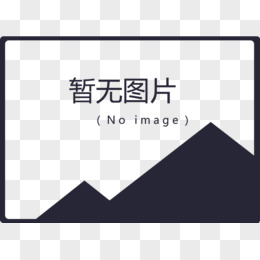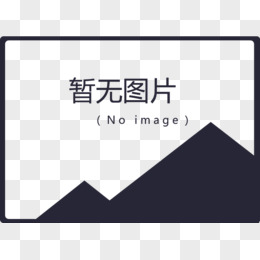最后一步游戏结束场景其实没什么好介绍的了,因为它跟第一个HelloWorld场景差不多,只是修改了背景图片,去掉了飞机,添加了显示分数和最高分的label。下面看看是如何实现的。
先创建GameOverScene.cpp文件和GameOverScene.h文件。头文件声明如下:
static cocos2d::Scene* createScene(); //创建场景的方法,其实就是把当前的层封装成Scene返回去,注意是静态方法。
virtual bool init(); //层初始化时调用CREATE_FUNC(GameOverScene); //一个宏,其实是层创建的方法,以上三个方法都是cocos2d固定的场景创建的方法。
void continueGame(cocos2d::Ref* pSender); //菜单项开始游戏的回调方法
void exitGame(cocos2d::Ref* pSender); //菜单项退出游戏的回调方法
这些代码也不需要怎么解释了,都是一些用过的。下面是实现。
bool GameOverScene::init()
{ if ( !Layer::init() )
{ return false;
}
Size visibleSize = Director::getInstance()->getVisibleSize();
Vec2 origin = Director::getInstance()->getVisibleOrigin(); //创建背景
auto bg = Sprite::create("gameover.png");
bg->setPosition(Vec2(origin.x + visibleSize.width/2,visibleSize.height/2));
bg->setAnchorPoint(Vec2(0.5,0.5));
this->addChild(bg,0);
int currentScore = UserDefault::getInstance()->getIntegerForKey("currentScore"); //读取出上个场景存储进来的分数和最高分数
int topScore = UserDefault::getInstance()->getIntegerForKey("topScore"); //显示最终分数
auto label = cocos2d::Label::createWithSystemFont(__String::createWithFormat("%d",currentScore)->getCString(),"Arial",24);
label->setPosition(Vec2(visibleSize.width/2, origin.y + visibleSize.height/2 + 60));
label->setHorizontalAlignment(kCCTextAlignmentRight);
label->setAnchorPoint(Vec2(0.5,0.5));
this->addChild(label, 1); //显示最高分数
auto label2 = cocos2d::Label::createWithSystemFont(__String::createWithFormat("%d",topScore)->getCString(),"Arial",24);
label2->setPosition(Vec2(visibleSize.width/2, origin.y + visibleSize.height-label2->getContentSize().height));
label2->setHorizontalAlignment(kCCTextAlignmentRight);
label2->setAnchorPoint(Vec2(0.5,0.5));
this->addChild(label2, 1); //继续游戏菜单项
auto startItem = MenuItemImage::create( "game_start.png", "game_start2.png", CC_CALLBACK_1(GameOverScene::continueGame,this));
startItem->setPosition(Vec2(visibleSize.width/2 + origin.x, visibleSize.height/2 + origin.y)); //退出游戏菜单项
auto closeItem = MenuItemImage::create( "game_exit.png", "game_exit2.png",CC_CALLBACK_1(GameOverScene::exitGame, this));
closeItem->setPosition(Vec2(origin.x + visibleSize.width/2 ,visibleSize.height/2 + origin.y - startItem->getContentSize().height)); //把菜单项添加到菜单精灵中
auto menu = Menu::create(startItem,closeItem, NULL);
menu->setPosition(Vec2::ZERO); //把菜单精灵添加到当前的层中
this->addChild(menu,1); return true;
}//继续游戏菜单项的回调函数void GameOverScene::continueGame(Ref* pSender)
{
auto scene = GameScene::createScene(); //又进到游戏场景中去
auto gameScene = TransitionSlideInR::create(1.0f,scene); //场景切换的方式
Director::getInstance()->replaceScene(gameScene); //切换}//退出游戏的回调方法void GameOverScene::exitGame(Ref* pSender)
{ #if (CC_TARGET_PLATFORM == CC_PLATFORM_WP8) || (CC_TARGET_PLATFORM == CC_PLATFORM_WINRT)
MessageBox("You pressed the close button. Windows Store Apps do not implement a close button.","Alert"); return;#endif
Director::getInstance()->end(); //退出#if (CC_TARGET_PLATFORM == CC_PLATFORM_IOS)
exit(0);#endif}
最后,别忘了是在GameScene中在游戏结束的逻辑那里添加场景切换代码。
//游戏结束void GameScene::gameOver()
{
auto scene = GameOverScene::createScene();
auto gameOverScene = TransitionTurnOffTiles::create(1.0f,scene);
Director::getInstance()->replaceScene(gameOverScene);
}
好了,到这里我们整个游戏的核心模块就已经搞定了,当然还有许多不足的地方可以完善,有兴趣的同学可以完善。
下面看看整个游戏运行过程。

之后我会把我在学习Cocos2d-x的过程中所遇到的疑难杂症发布到博客上,欢迎大家来讨论学习,谢谢。
相关教程:
Cocos2d-x 3.x《飞机大战》教程1:环境与创建项目 https://www.taikr.com/article/1587
Cocos2d-x 3.x《飞机大战》教程2:素材准备与游戏菜单场景https://www.taikr.com/article/1589
Cocos2d-x 3.x《飞机大战》教程3:物理引擎的使用 https://www.taikr.com/article/1590
Cocos2d-x 3.x《飞机大战》教程4:游戏场景 https://www.taikr.com/article/1591
Cocos2d-x 3.x《飞机大战》教程5:敌我碰撞处理、分数计算、音乐播放 https://www.taikr.com/article/1592






